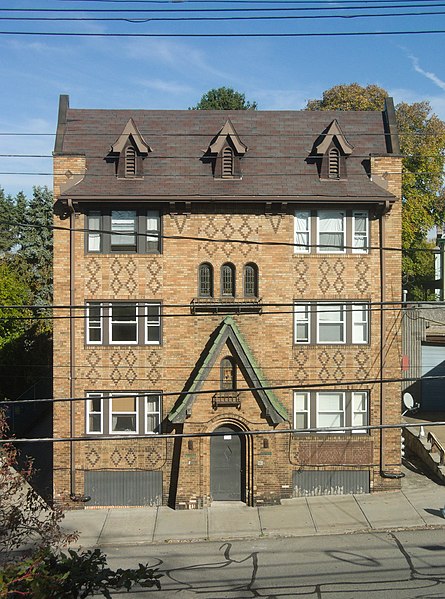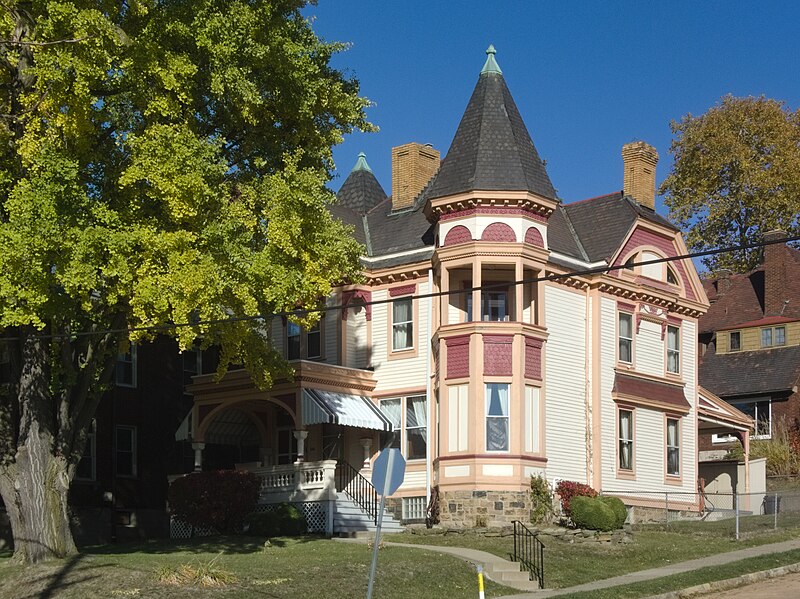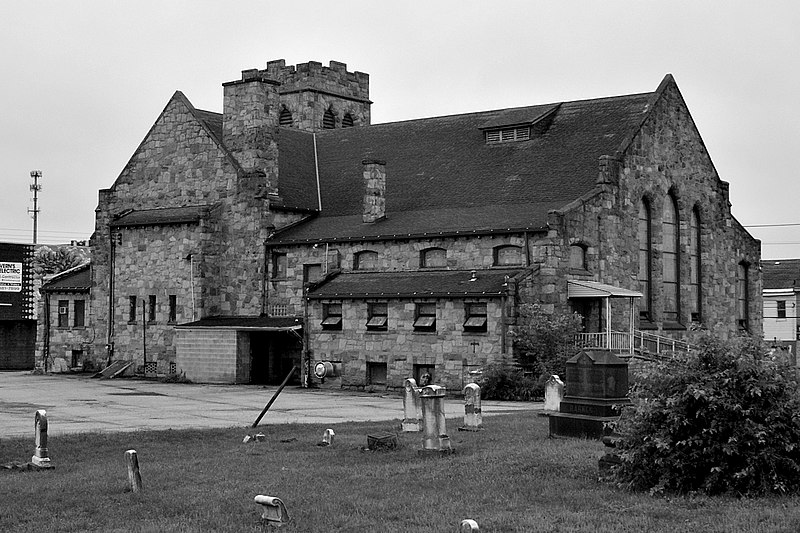
Now Zion Christian Church. The cornerstone tells us that the congregation was founded in 1908, and its first building was at the corner of Birmingham Avenue and Hays Avenue (now Amanda Street)—a small frame chapel that must have quickly become woefully overcrowded, since this building many times the size was constructed less than twenty years later.

“The membership is 381, as compared with a membership of 30 in 1908,” says the Gazette Times of February 18, 1925, when the plans for the new building were announced.

The architect was Walter H. Gould, “a member of the church,” and so far this is the only building attributed to him that Father Pitt knows about. However, it is an accomplished if not breathtakingly original design, so there must be other Gould buildings lurking about, probably in the South Hills neighborhoods. Comparing the published rendering above with the church as it stands today shows us that the tower grew about a floor’s worth of height between conception and construction—a rare example, perhaps, of an architect being told that his original design was not ambitious enough.



“By spirit and faith and the help of God.”






























